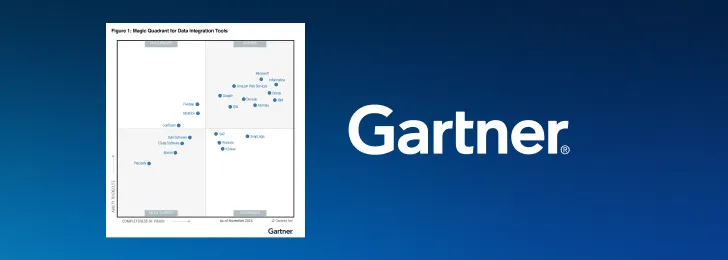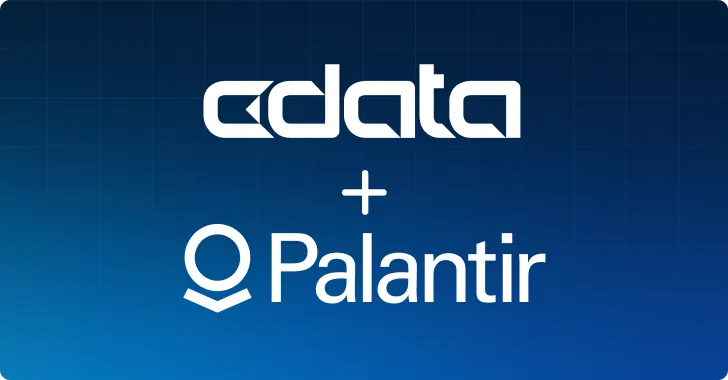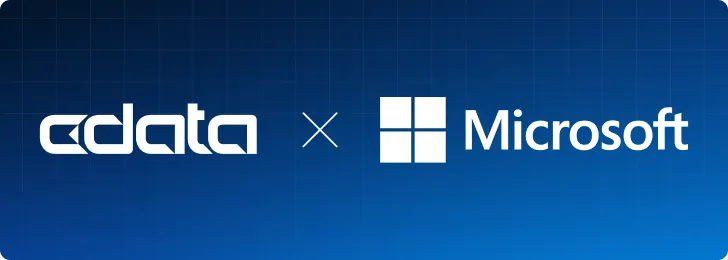
There are many ETL (extract, transform, load) tools on the market that support Microsoft SQL. Some of the most popular choices include CData Sync, Integrate.io, Talend, Informatica, Fivetran, and Microsoft's own SSIS (SQL Server Integration Services).
ETL tools are vital to data management for a lot of reasons, including:
- Data integration
- Data quality
- Efficiency and consistency across data sources and applications
- Business intelligence
- Data migration
- Compliance and security
All of these are critical to any organization that deals with large amounts of data – which is pretty much every one.
SQL Server and the ETL process
Let’s start with explaining ETL. ETL stands for ‘extract, transform, load’, which refers to a process of data integration used in data warehousing and business intelligence. Here's a brief overview of each step:
- Extract: The first stage in ETL is collecting and extracting data from its source. Data can come from many sources, but the most common one is a database.
- Transform: The second stage is a transformation process. Typically, raw data is not in a form that’s suitable for analysis. Transforming the data often involves filtering, aggregating, pivoting/unpivoting, deriving new columns, etc.
- Load: The final stage, after the data has been extracted and transformed, is loading the data into a target database oe data warehouse.
Given that general definition, the ETL process for SQL Server in general looks like this:
- Extraction
- Identify and connect to the source data systems (e.g., databases, flat files, APIs).
- Extract data from the source systems into a staging area.
- Transformation
- Clean and validate the extracted data to ensure data quality.
- Apply transformations to convert and standardize data formats, values, or structures. This step may involve filtering, sorting, aggregating, and other operations.
- Handle any business rules or logic required for the data integration.
- Refine the data by pivoting, adding new columns, or combining information from various sources.
- Loading
- Create or connect to the destination database in SQL Server where the transformed data is to be loaded.
- Load the data from the staging area into the destination tables. This may involve inserting, updating, or deleting records based on business requirements.
- Indexing and other performance optimizations may be applied during the loading phase.
- Monitor and log the loading process for auditing purposes.
- Validation and testing
- Perform data validation checks to ensure that the data in the destination tables meets the expected standards.
- Conduct testing to verify that the ETL process is functioning correctly. This includes unit testing, integration testing, and performance testing.
- Scheduling and automation
- Schedule the ETL process to run at appropriate intervals (e.g., daily, hourly).
- Automate the ETL workflow to reduce manual intervention and ensure consistency in data processing.
- Error handling and logging
- Implement mechanisms for error handling to address issues that may arise during the ETL process.
- Log information about the ETL process execution, including success and error messages, for troubleshooting and auditing purposes.
- Monitoring and maintenance
- Monitor the ETL process performance regularly.
- Implement maintenance tasks such as optimizing queries, updating statistics, and cleaning up unnecessary data.
It's important to note that the specific implementation of the ETL process for SQL Server can vary based on the tools and technologies you use, and the specific requirements of your data integration project. Tools like SQL Server Integration Services (SSIS) are commonly used for designing and executing ETL processes in a SQL Server environment.
The top features every SQL ETL tool should have
Several key features are considered essential for effective data integration and processing. Here are some top features that you should look for in an SQL ETL:
- Connectivity to various data sources: The ability to connect to a wide range of data sources such as databases, flat files, cloud storage, APIs, and more.
- Data transformation capabilities: Robust data transformation functionalities for cleaning, aggregating, and restructuring data according to business requirements.
- Scalability: Ability to handle large volumes of data and scale horizontally as data processing needs grow.
- Performance optimization: Optimization features to enhance performance, including parallel processing, indexing, and query optimization.
- Data quality and validation: Built-in mechanisms for data quality checks, validation, and error handling to ensure accurate and reliable data.
- Automation and scheduling: Automated scheduling of ETL processes to run at specified intervals, reducing manual intervention and ensuring timely data updates.
- Monitoring and logging: Comprehensive monitoring and logging tools to track the status of ETL jobs, identify errors, and troubleshoot issues.
- Security: Robust security features to control access to data, encrypt sensitive information, and comply with data privacy regulations.
- Metadata management: Effective metadata management for tracking and documenting data lineage, transformations, and dependencies.
- Version control: Versioning capabilities to manage changes to ETL processes, making it easier to roll back to previous versions if needed.
- Support for incremental loading: Ability to perform incremental loading of data to update only the changed or new records, reducing processing time.
- Flexibility and extensibility: Flexibility to handle different data formats, structures, and evolving business requirements. Extensibility via scripts or plugins.
- Cost efficiency: Consideration of cost efficiency, with features like resource optimization and compatibility with cost-effective cloud storage and processing solutions.
When selecting an ETL tool for SQL Server, it's important to evaluate these features based on your specific business needs, data volumes, and integration requirements. Additionally, consider factors such as ease of use, community support, and vendor reputation in your decision-making process.
8 most popular ETL tools for SQL Server for 2024
Here are the seven top ETL tools commonly used with SQL Server:
- SQL Server Integration Services (SSIS): The most popular tool that supports ETL was developed by Microsoft. SSIS is an ETL tool that is part of the Microsoft SQL Server database software. It provides a platform for data integration and workflow applications.
- CData Sync: Sync provides robust, automated, continuous ETL/ELT data replication from any on-premises or cloud data source to Microsoft SQL Server. The tool allows users to create and maintain a replica of their data from hundreds of sources, and make it easily accessible from common database tools, software applications, and analytics tools.
- Talend: Talend is an open-source ETL tool that supports various data integration and transformation tasks. It has a user-friendly interface and offers both open-source and commercial versions.
- Informatica PowerCenter: Informatica is a widely used ETL tool that offers advanced data integration capabilities. PowerCenter is one of its flagship products and is known for its scalability and flexibility.
- Apache NiFi: NiFi is an open-source data integration tool that provides an intuitive interface for designing data flows. It automates data transfer between systems.
- Microsoft Azure Data Factory: Azure Data Factory is a cloud-based ETL service developed by Microsoft Azure. It allows you to create, schedule, and manage data pipelines in the Azure cloud.
- Apache Spark: While not exclusively an ETL tool, Apache Spark is a powerful open-source data processing engine that you can use for ETL tasks. It supports various programming languages and offers in-memory processing.
- Pentaho Data Integration (Kettle): Pentaho is an open-source business intelligence and data integration platform. Kettle is its ETL tool component.
The CData difference
CData Sync is a data synchronization and replication tool designed to facilitate the movement of data between hundreds of data sources and destinations. It supports a wide range of databases, applications, and cloud-based services, allowing you to synchronize and replicate data from any source to your SQL Server database.
CData Sync is fully featured, easy to use ETL solution for SQL Server, and is backed by a world-class support team. Download a free trial and build ETL pipelines for SQL in minutes!
Explore CData Sync
Take a product tour today to learn how CData Sync can help you make the most of your SQL Server data.





